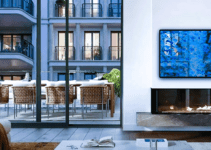LIVING ROOM – ONE OF THE MOST IMPOTANT SPACES
The living room is one of the most important spaces in your home, where you entertain guests, relax with your family, and express your personality. One of the easiest and most effective ways to enhance the look and feel of your living room is to add an area rug.
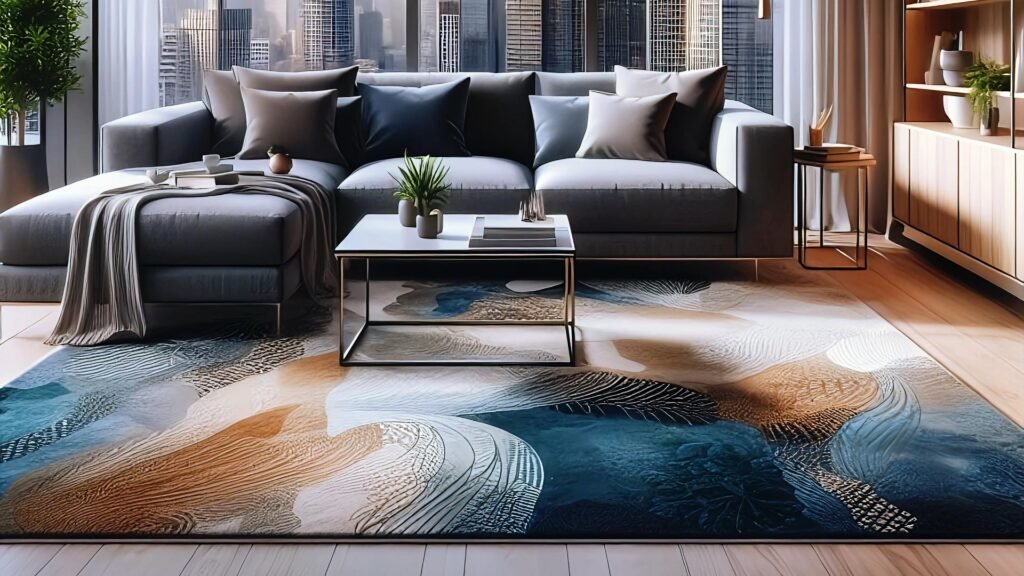

Please read our article and watch the newly uploaded video from our YouTube channel:
“Grig Stamate – Interior Design Solutions”
https://www.youtube.com/@GrigStamate
Create Accents with CARPETS: The Power of Living Room Area Rugs (video)
Here, you can find another video from our YouTube channel:
Carpets and rugs create zones | Simple Ways to Create a New Home Interior #11 (video)
A well-chosen rug can create accents, define zones, add warmth, and bring color and texture to your space. Here are some of the benefits and tips of using area rugs in your living room:
CREATE ACCENTS
A rug can be a focal point of your living room, drawing attention to a specific area or piece of furniture. For example, you can use a rug to highlight a coffee table, a fireplace, or a sofa. A rug can also create contrast and balance with the rest of your decor, adding interest and dimension. For example, you can use a rug with a bold pattern or color to spice up a neutral or minimalist living room or use a rug with a subtle or muted tone to soften a bright or busy living room.
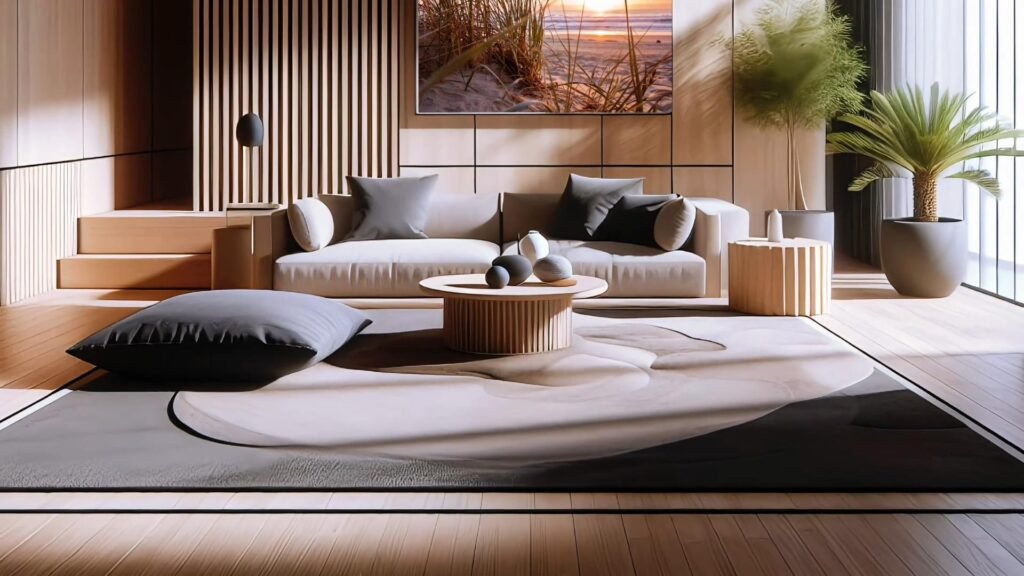
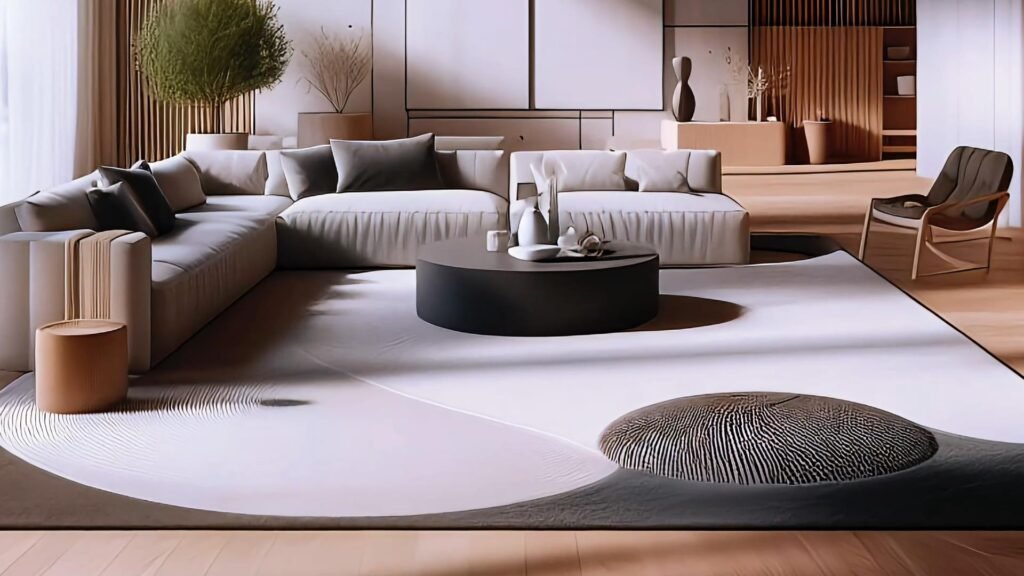
DEFINE ZONES
A rug can help you divide your living room into different zones, especially if you have an open floor plan or a large space. For example, you can use a rug to separate a seating area from a dining area, a reading nook from a TV corner, or a play area from a work area. A rug can also help you create a sense of intimacy and coziness in a large or spacious living room, making it more inviting and comfortable.
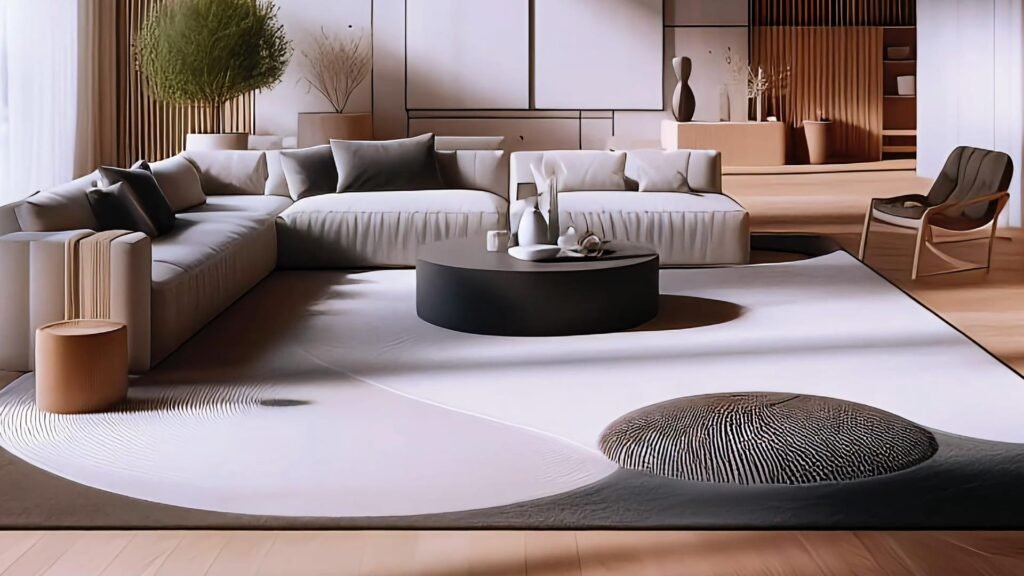

ADD WARMTH
A rug can provide warmth and comfort to your living room, especially if you have a hard or cold floor, such as tile, stone, or concrete. A rug can also reduce noise and echo, creating a more pleasant and peaceful atmosphere. A rug can also protect your floor from scratches, stains, and wear and tear, extending its lifespan and saving you money in the long run.
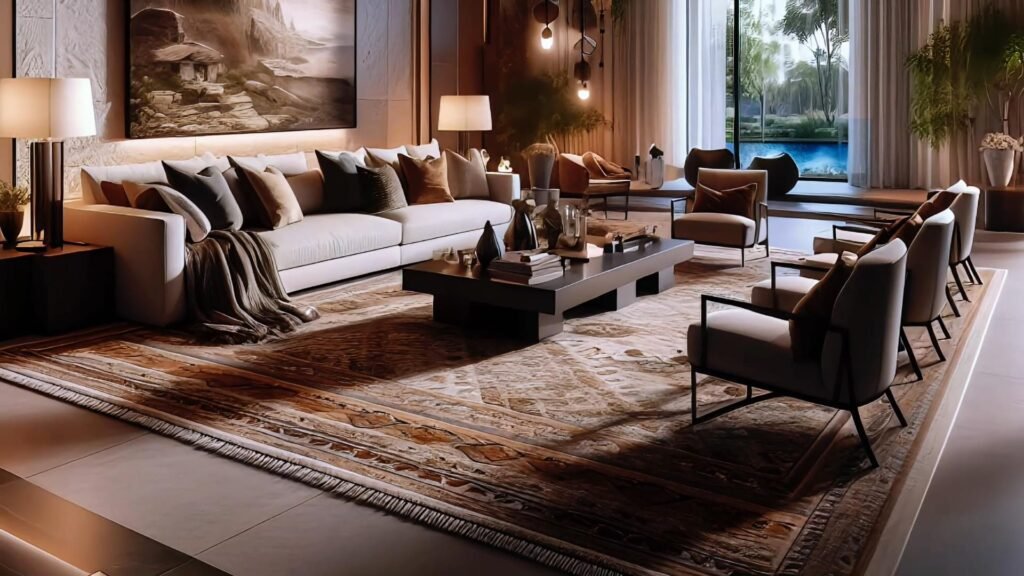

BRING COLOR AND TEXTURE
A rug can add color and texture to your living room, enhancing its aesthetic appeal and mood. A rug can complement or contrast with your existing color scheme, creating harmony or drama. A rug can also introduce different textures, such as soft, fluffy, smooth, or rough, adding variety and richness to your space. A rug can also reflect your personal style and taste, whether it is traditional, modern, rustic, or eclectic.
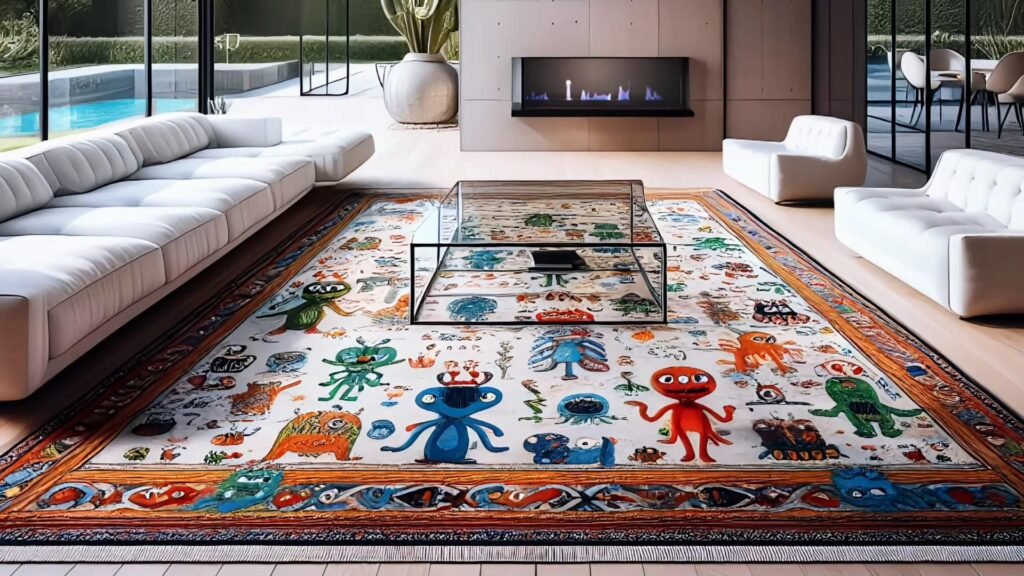
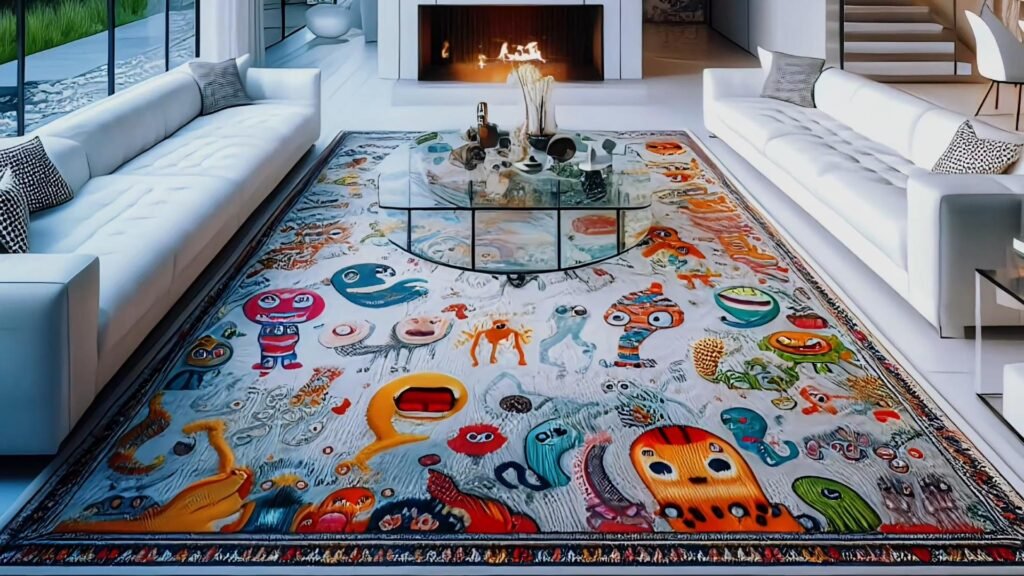
HOW TO CHOOSE AND STYLE YOUR AREA RUG
Choosing and styling a rug for your living room can be a fun and creative process, but it can also be challenging and overwhelming. Here are some of the factors and tips to consider when selecting and arranging your rug.
Size:
The size of your rug depends on the size of your living room and the furniture arrangement. A general rule of thumb is to choose a rug that is large enough to fit all or most of the furniture legs on it, creating a cohesive and unified look. However, you can also choose a smaller rug that fits only the front legs of the furniture, creating a more open and spacious look. Alternatively, you can choose a larger rug that extends beyond the furniture, creating a more cozy and intimate look. You can also layer multiple rugs of different sizes, shapes, and styles, creating a more dynamic and eclectic look.
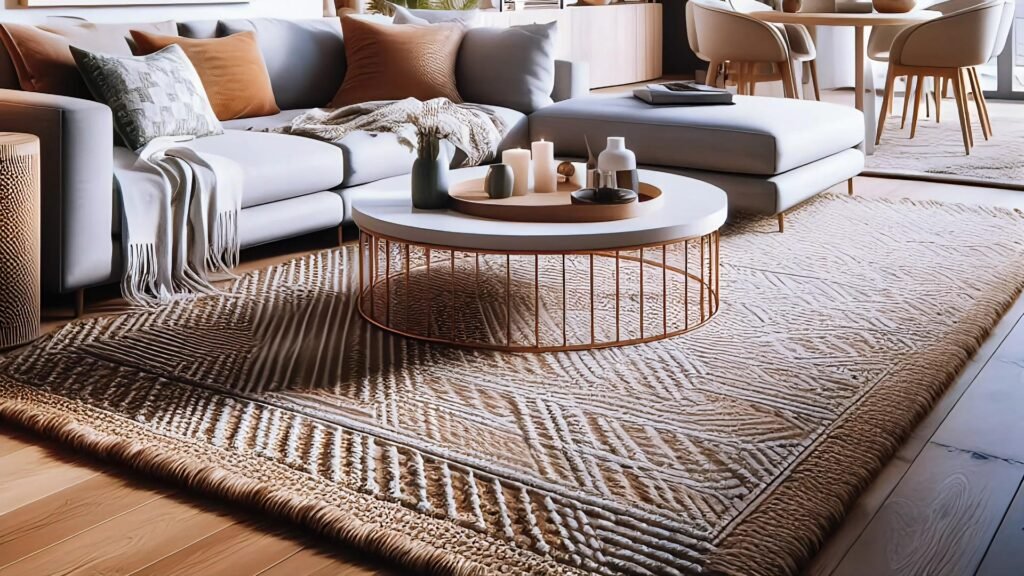
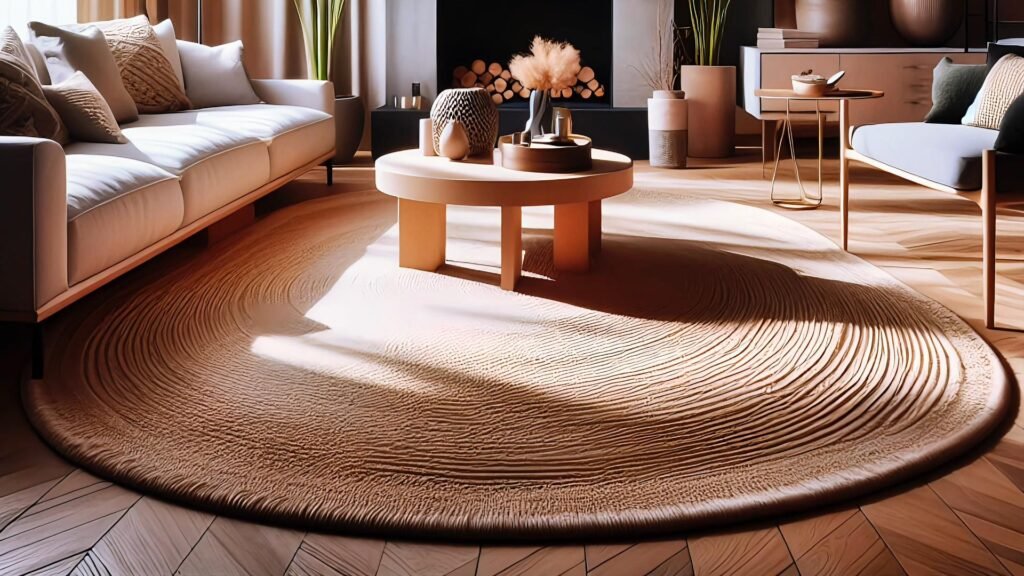
Shape:
The shape of your rug should match or contrast with the shape of your living room and the furniture. A rectangular rug is the most common and versatile choice, as it can fit most living rooms and furniture arrangements. However, you can also choose a round, oval, square, or irregular-shaped rug, depending on your preference and the effect you want to create. For example, a round or oval rug can soften the edges and corners of a square or rectangular living room, creating a more organic and fluid look. A square or irregular-shaped rug can add some geometric interest and drama to a round or oval living room, creating a more edgy and modern look.
Color:
The color of your rug should coordinate or contrast with the color of your living room and the furniture. You can choose a rug that matches or complements your existing color scheme, creating a harmonious and balanced look. For example, you can choose a rug that has the same or similar color as your walls, curtains, or sofa, creating a monochromatic or tonal look. You can also choose a rug that has a different or opposite color from your walls, curtains, or sofa, creating a contrasting or complementary look. For example, you can choose a rug that has a warm color, such as red, orange, or yellow, to contrast with a cool color, such as blue, green, or purple, or vice versa, creating a vibrant and lively look.
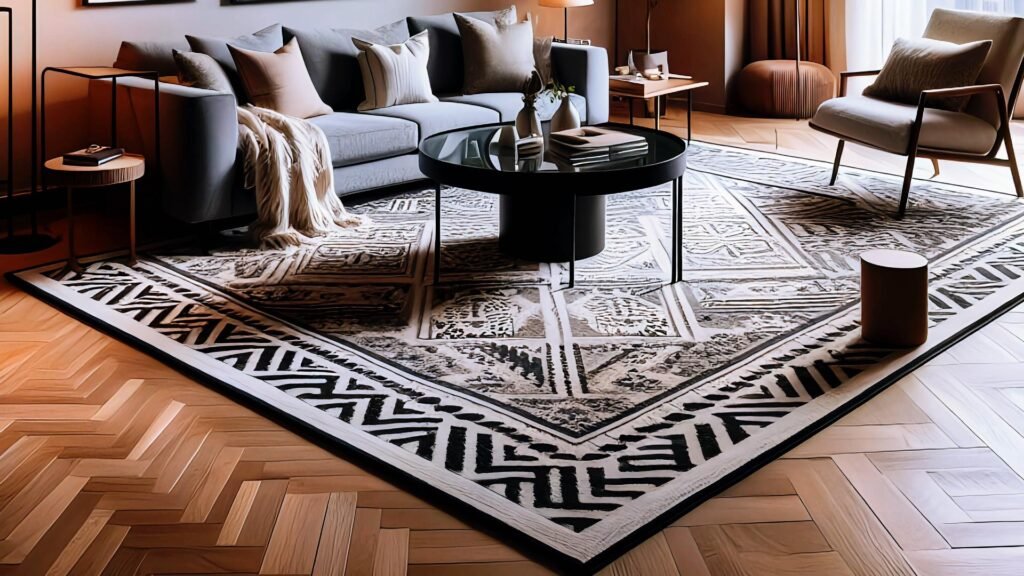
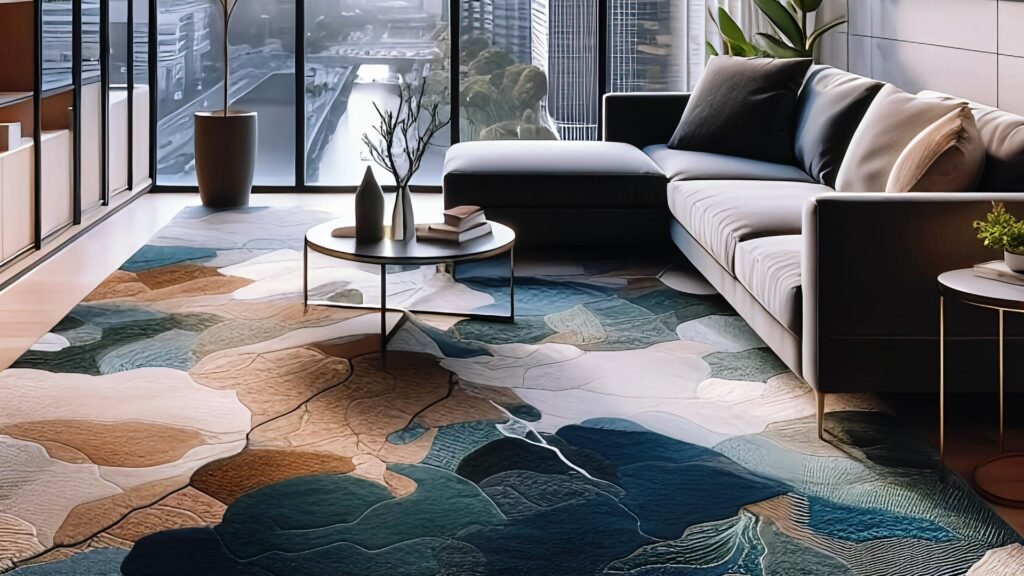
Pattern:
The pattern of your rug should complement or contrast with the pattern of your living room and the furniture. You can choose a rug that has a simple or solid pattern, such as stripes, dots, or plain, creating a minimalist and elegant look. You can also choose a rug that has a complex or intricate pattern, such as floral, geometric, or abstract, creating a maximalist and expressive look. You can also mix and match different patterns, creating a more eclectic and playful look. However, you should be careful not to overdo it, as too many patterns can make your living room look cluttered and chaotic. A good tip is to balance the patterns with some solid or neutral elements, such as walls, curtains, or furniture.
Texture:
The texture of your rug should complement or contrast with the texture of your living room and the furniture. You can choose a rug that has a smooth or flat texture, such as cotton, silk, or synthetic, creating a sleek and refined look. You can also choose a rug that has a rough or fluffy texture, such as wool, jute, or shag, creating a cozy and rustic look. You can also mix and match different textures, creating a more diverse and interesting look. However, you should also consider the practicality and durability of the rug, as some textures may be more suitable for certain living rooms and lifestyles than others. For example, a smooth or flat rug may be easier to clean and maintain, but it may also be more prone to slipping and sliding. A rough or fluffy rug may be more comfortable and warm, but it may also be more difficult to vacuum and remove stains.
CONCLUSION:
A rug is a powerful and versatile accessory that can transform your living room in many ways. A rug can create accents, define zones, add warmth, and bring color and texture to your space. A rug can also reflect your personal style and taste, making your living room more unique and attractive. However, choosing and styling a rug for your living room can also be a daunting task, as there are many factors and options to consider. Therefore, you should do some research and planning before buying and placing your rug, taking into account the size, shape, color, pattern, and texture of your rug, as well as the size, shape, color, pattern, and texture of your living room and the furniture. You should also experiment and have fun with different combinations and arrangements, until you find the one that suits your living room and your vision. A rug can make a big difference in your living room, so don’t be afraid to try something new and express yourself with carpets!
Other related posts from our website:
Let’s see here, three of them:
https://howtobuildahouseblog.com/practical-tips-and-care-for-wool-rugs-and-carpets/
https://howtobuildahouseblog.com/carpets-and-rugs-create-zones-in-a-larger-open-space/
https://howtobuildahouseblog.com/area-rugs-bring-warmth-and-beauty-to-your-home/
Thank you so much for your attention.
We also sincerely hope you like our ideas from this post, and you have also enjoyed our uploaded YouTube video.
See you next time at another article.
Thank you so much for your time. Bye now!

